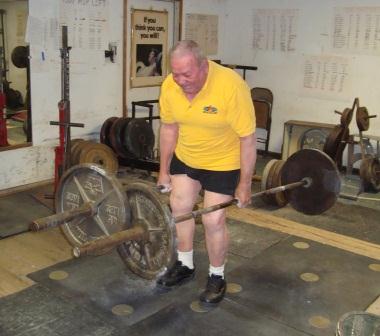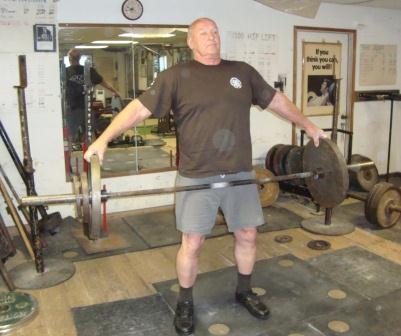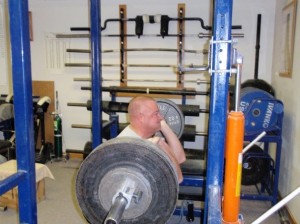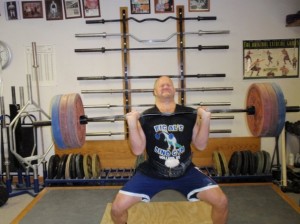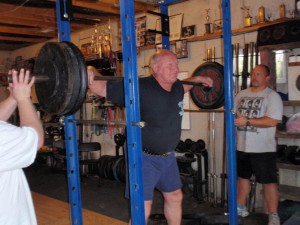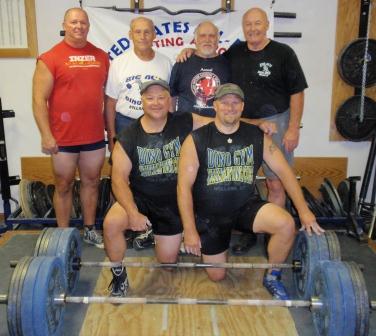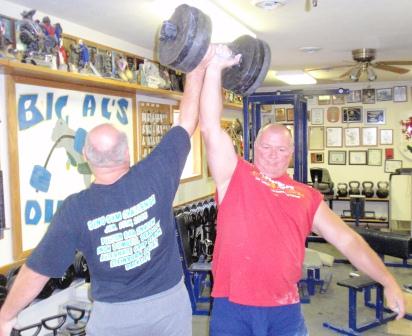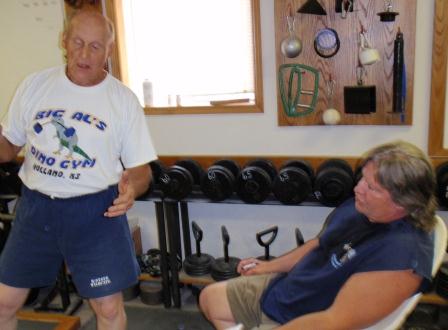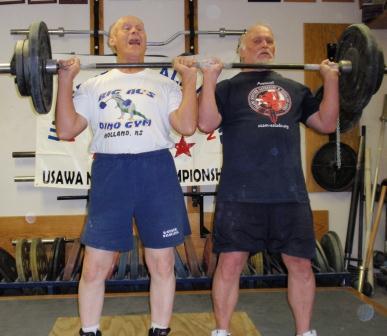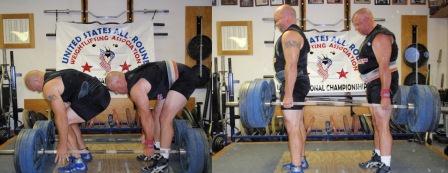Making Your Weight Training “All-Around”
by Jarrod Fobes
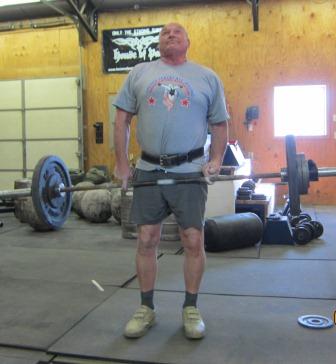
Dean Ross performing an Index Fingers Deadlift at the 2012 USAWA Grip Championships. This is one of the many variations of deadlifts within the USAWA that could be done as a "warm up" prior to a heavy deadlift training session.
Let me start off by saying that I am very new to the sport of weightlifting, and in that regard my opinions on how weight training should be done don’t count for squat. But I am a long time athlete and coach, and I do know a thing or two about creating an effective training program. So I thought I would share how I have been incorporating all-around lifting into my overall strength training, and see what the athletes of USAWA think.
Initially I tried training two days a week; one day of Olympic lifting and one day training whatever all-around lifts I was most interested in at the time. This didn’t work because if I had to miss a day of lifting, I either had to sacrifice my beloved all-around lifts, or miss out on some desperately needed Olympic practice. Also, my all-around sessions tended to focus on the lifts I was good at, rather than the lifts I needed to do. I needed to find a way to make sure I got a good full body workout on either day.
The general program I settled on is nothing revolutionary or even particularly intense: one or two full-body workouts a week, three or four lifts, each one for three or four sets of heavy singles, doubles, or triples. I pyramid up each set. I realize this is a pretty inexact scheme, but between teaching four martial arts classes a week and holding a physical job, I have to be able to vary the intensity based on how rested and ready I am. What is not inexact is my record-keeping. I think it’s important to diligently record the weight lifted each workout, regardless of whether it was a PR day or not.
With such a necessarily limited workout, it’s pretty hard to train the nearly 200 lifts included in the USAWA. So I’ve started “stealing” sets from the core lifts. For instance instead of doing four sets of Clean & Jerks, I might warm up with a set of Miller C&J. While this is a tough finger lift, it’s just a warm up for the back, leg, and shoulder muscles. Afterwards, I’ll struggle through a couple sets of Clean & Jerks, going up in weight if I feel my technique has improved enough. Then I’ll do one or two sets of an all-around lift that trains muscles or movement similar to the clean & jerk. If I’m sore and tired that day, I’ll pick something I’m not very good at (like One-Arm C&J, Judd C&J, etc) and focus on technique. If I’m feeling strong, I’ll pick one of my better lifts like the Turkish-Get Up and really try to push weight. Not only do the all-around lifts function as assistance exercises to the core lift, but the strength and technique gained from the core lift helps the all-around training too!
I bet there are a ton of creative ways to get some all-around practice in during your training, and I’d love to see some follow-up stories from veterans as well as other beginners.
